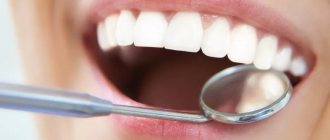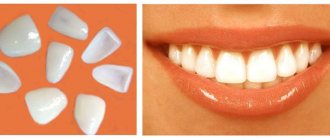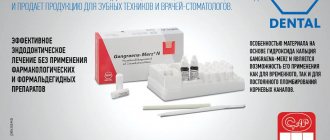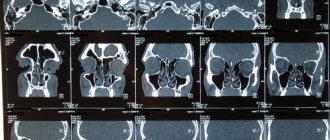Features of wisdom teeth removal
Wisdom teeth, also known as third (outermost) molars or numbers of eight, are teeth that erupt later than others, and sometimes do not erupt at all. They do not participate in the chewing process and other functions of the oral cavity, and therefore are justifiably considered useless. But these teeth add troubles to a person’s life. Dental plaque accumulates on them and stone forms, creating favorable conditions for the development of caries, periodontal disease and other diseases. These teeth are difficult to clean with a regular toothbrush. In addition, during eruption they cause pain to their “owner”. This significant discomfort forces patients to turn to dentists with a request to remove unnecessary teeth that cause so much concern.
And, indeed, eights are the most problematic teeth. They are massive, often have the wrong direction of growth, and their roots lie at great depths in the bone tissue. All this complicates the extraction procedure. In such cases, complex removal is performed. The doctor's procedure is as follows:
- a deep incision is made in the gum;
- The tooth subject to extraction is separated from the soft tissue using a scalpel;
- make drilling of the interroot septum;
- forceps are fixed on the crown;
- The molar is rocked and removed from the socket;
- Sutures are placed on the gum tissue.
The operation takes place under anesthesia and is completely painless, but is considered quite traumatic. This implies the development of an inflammatory process, which, in the absence of timely treatment, can lead to serious consequences, causing sepsis and other pathologies. In addition, after the operation, the patient experiences swelling, pain, fever, pain when swallowing and other undesirable effects. Therefore, figure eights should be removed only if there are medical indications.
"Eights" and complications associated with them
When wisdom teeth erupt, they can form what is called a “hood.” This occurs when the gum above the tooth is partially preserved. The danger is that food debris can get into this kind of gum pocket, decompose there and cause inflammation. The development of such a process will require treatment. First, the dentist must rinse the pocket with a special antiseptic, apply medicine, and prescribe some medications depending on the degree of the inflammatory process. When the inflammatory process is resolved, the doctor will recommend removing the wisdom tooth. During the acute inflammatory phase, teeth are usually not removed.
“Eights” can erupt towards the tongue or cheek, causing chronic injury to the mucous membrane, which can lead to tumors, ulcers and cause a lot of discomfort.
Let’s say the eighth tooth erupted normally, but a cavity has formed between it and the seventh tooth, where food regularly gets clogged. This can lead to a fairly rapid development of the carious process, which affects not only the wisdom tooth, which is absolutely useless for a person, but also the strategically important seventh tooth. As a rule, in case of interdental caries on such teeth, the “eight” must be immediately removed, and after the socket is restored, a filling is installed on the seventh tooth.
Another complication occurs when the hidden eighth tooth, located horizontally in the gum, rests on the root of the seventh tooth and begins to injure it, leading to the formation of a cyst. In worst case scenarios, such inflammatory processes can even lead to jaw resection. Unfortunately, these cysts can develop asymptomatically for quite a long time. That is why you need to undergo dental examinations every six months and have dental x-rays done every 2-3 years.
In what cases is removal justified?
Despite the popularity of such a service as wisdom tooth removal, there are not many real indications for this procedure:
- extensive damage to the tooth by caries (including generalized);
- serious deformation of the tooth or the impossibility of its treatment;
- incorrect position - the extreme molar can grow at an angle or even horizontally, simultaneously putting pressure on neighboring teeth, causing discomfort and pain;
- sometimes the wisdom tooth does not fit in the dental row and grows directly into the gum, causing severe pain;
- nerve damage, inflammation or cyst.
Incorrect position of the extreme molar can provoke changes in the bite and disruption of the dental system. As a result, the patient may develop diseases of the temporomandibular joints and masticatory muscles.
External changes in the lower third of the face
Asymmetry - how to correct the situation?
Most radical and “global” rejuvenation treatments affect the lower third of the face. Why? The answer is quite simple: it is in the lower third of the face that the dentofacial system is concentrated, which, for a number of reasons, undergoes significant changes, leading to changes in the surrounding facial tissues. The process, if described in simple words, looks like this: the bone atrophies, the tissue follows the bone. Visually, this violates the aesthetics of the face, causing facial asymmetry.
The presence of bite pathologies can also affect facial aesthetics
.
Let's look at it in order:
First, as it happens, one tooth is lost
.
Missing one tooth. Starting factor #1
If only one tooth is missing, then at first it may not be very noticeable; the contour of the lips will change slightly, as the lip will begin to “sink” into the place of the missing tooth.
But there is one important point: the bone tissue in the absence of a tooth will begin to dissolve.
What does this mean from the point of view of violation of facial aesthetics:
- The necks of neighboring teeth will gradually begin to become exposed and their loss may occur,
- in this case, the lip will sink even more, affecting the neighboring muscles, and small vertical folds may appear above the lip.
The loss of one tooth is not critical, but you need to know that as a result of the loss of a tooth in the chewing region, the load will begin to be redistributed to other teeth, including the anterior frontal region. And the additional, unplanned by Nature, load on the teeth leads to their abrasion
. When two or more teeth are lost, the processes of distributing the load on adjacent teeth begin to occur more actively.
So, the next factor is tooth wear.
Tooth wear and bruxism. System factor #2
Now let's look at what happens with tooth wear and bruxism.
At its core, tooth wear involves abrasion of the tooth tissue. With pathological abrasion and bruxism, this process occurs many times faster, the crown part of the tooth decreases, and again the height of the lower third of the face decreases.
When teeth wear down, changes occur in the temporomandibular joint, just as in the absence of teeth.
What aesthetic defects
faces appear when erased:
- the lower jaw gradually begins to rise upward,
- the distance between the tip of the nose and the chin decreases,
- nasolabial folds increase,
- Vertical wrinkles appear around the lips.
The next factor in external aesthetic changes in the face is malocclusion
. This is one of the most common problems.
Malocclusion. Global factor #3
If the teeth are not positioned visually, it may:
- the tip of the chin moves,
- a second fold appears under the chin,
- “cluttered” chewing teeth can externally “round” the jaw line at their location, that is, the jaw line from the chin towards the ear will not be “chiseled”.
- also, if the teeth are incorrectly positioned, the lower jaw can protrude forward or, on the contrary, move backward - outwardly such a chin looks “sloping”, as if the neck immediately begins from the chin.
Bite pathology very often “adds” a sufficient number of unplanned wrinkles
.
From an aesthetics point of view, a problem arises that very often begins to be solved with the help of cosmetic procedures: Let’s look at what it looks like using specific examples of only two malocclusion pathologies (and there are many more of them).
Did you know that, for example, the feature of the distal occlusion
is there an imbalance in jaw development?
The teeth of the upper jaw quickly begin to protrude above the lower ones, while the lower jaw lags behind in development, as a result of which the chin appears small and looks unnatural. From an aesthetic point of view, this leads to the appearance of wrinkles
in the lip area. And the face itself becomes unattractive.
And in case of deep bite
there is a significant overlap of the lower dentition with the upper teeth and, as a consequence of such contact, there is increased wear of the teeth, which we talked about earlier in factor #2, which further leads to a reduction in the lower third of the face.
We started the story with factor #1 - the loss of one tooth. But the most serious problems of facial aesthetics begin with the loss of several teeth, when bone tissue atrophy begins to develop, entailing, in fact, both bone atrophy and changes in the structure of soft tissues.
So - edentia. Global factor #4
Adentia can be either complete or partial. With complete edentia, there is a complete absence of teeth on one or both jaws. Partial edentia implies the absence of one or two teeth or a segment of teeth, for example chewing teeth. Loss of teeth, especially complete loss, immediately affects the appearance of the face.
If teeth are missing, the height of the lower third of the face decreases, what does this lead to? This leads to a loss of support for the jaws by the teeth, as a result of which the jaw moves backward in the joint area, and forward and upward in the chin area. This is how an “old man’s face” appears - the distance between the tip of the nose and the top of the chin decreases.
How does edentia appear on the face?
What aesthetic defects appear on the face during the development of edentia:
- all folds naturally begin to deepen, nasolabial folds become pronounced - they descend to the corners of the lips,
- the lips outwardly look much thinner, since when they lose support from the teeth, they shift towards the oral cavity,
- the tone of facial muscles decreases, the cheeks and chin tissues sag,
- in the absence of a group of chewing teeth, the soft tissues begin to “fall” inward.
- and with a long-term absence of chewing teeth, bone tissue begins to dissolve, outwardly it looks like very “sunken cheeks.”
As you can see, all these factors influence changes in the appearance of the face, its shape and gives asymmetry. Changes can occur regardless of age, but at the same time they make the face look older due to the deepening of the nasolabial folds and incorrect position of the jaws.
In what cases is deletion not required?
- The tooth erupts without causing discomfort, has the correct position and direction of growth.
- The wisdom tooth does not interfere with neighboring teeth, does not provoke their displacement or deformation.
- An overgrown extreme molar does not interfere with the installation of dental structures.
- In the case where the molar has a correctly erupted antagonist tooth.
- If treatment of the affected tooth is possible.
- The erupted wisdom tooth has the correct shape and does not injure the cheek and soft tissues of the oral cavity.
- Simply put, if the wisdom tooth has erupted safely and does not cause any trouble or discomfort, you should not touch it.
Even if a molar is affected by caries, but it is possible to cure it, the priority is treatment rather than extraction. The potential consequences and complications after removal are many times more complex than the treatment procedure.
When the figure eight is removed, inflammation, infection, and gumboil may develop, which will require complex and lengthy therapy. It is much easier and cheaper to cure caries or periodontitis that affects wisdom teeth.
Changes in soft tissues
Attached soft tissues also change when bone volume changes. The gums shrink in volume and become thinner. In the lower jaw, the layer of attached soft tissue may be very thin or almost absent.
Periodontal nutrition is disrupted and blood supply deteriorates. This further accelerates destruction: surface tissues become thin, susceptible to inflammation and irritation. In advanced cases, bedsores form. Destructive processes provoke the development of chronic periodontal diseases. These, in turn, can lead to the loss of adjacent teeth.
If toothless ridges of bone tissue on the jaw have already formed, the tongue can gradually increase in size: it fills the space that was previously occupied. With the loss of one tooth, such manifestations are minimal; if there are several gaps in the dentition, the enlargement of the tongue will be clearly visible.
Possible complications after extraction
After removal of the extreme molar, patients experience swelling and swelling in the cheek and gum area, numbness of the face, moderate bleeding, discharge of ichor and pain. Moreover, these manifestations are companions of non-infectious inflammation and are considered the norm. They do not pose any danger and will disappear within a few days if the healing process is normal. The rehabilitation period after wisdom tooth removal lasts about one to two weeks.
More serious side effects should be expected if errors were made during the operation, or if the patient himself took the doctor’s recommendations lightly and violated the rules of rehabilitation.
A common complication after tooth extraction is osteomyelitis - an inflammatory lesion of bone and soft tissue. Suppuration begins inside the tissues. Osteomyelitis occurs if an infection gets into the socket during or after surgery. There is an increase in temperature, severe swelling of the gums and cheeks, severe persistent pain, general weakness, sleep disturbance and headaches.
Without medical intervention, infection and sepsis may spread.
Other consequences include abscess, paresthesia of the tongue, gumboil, and neuritis. All pathologies are accompanied by pain and deterioration in well-being. Therefore, if after one and a half, maximum two weeks, the pain, discomfort and swelling have not completely gone away, you should consult a dentist.
Wisdom tooth removal is a complex operation, and all risks should be carefully weighed before planning it. These teeth should be removed only if there are serious medical indications, and if there is an opportunity to save them, then it is worth taking advantage of it.
Aesthetic consequences
The presence of even one gap in the dentition can change the proportions of the face over time. Age-related aging processes accelerate, become more noticeable, and intensify:
- due to alveolar bone resorption, facial height decreases;
- vertical lines become more noticeable in the area of the lips and chin, making the face look rougher;
- The bite gradually changes, which can cause the proportions of the lips to be disrupted and the chin to change;
- with edentulism in the upper jaw, the nasolabial groove deepens faster and more noticeably, which is why the face looks older;
- It is possible to form a double chin if the attachment of the muscles to the body of the lower jaw is disrupted and their tone decreases.
Bone loss
After a tooth is removed, the bone tissue begins to atrophy. Bone volume decreases by 25% per year, and the process is not as harmless as it might seem at first glance. Bone atrophy can cause adjacent teeth to become loose and even fall out.
Bone loss also creates problems with subsequent prosthetics. If a tooth is missing for too long, doctors have to perform a bone grafting procedure before installing an implant. This significantly increases the overall treatment time and cost.
What if your wisdom tooth hurts?
Removal of wisdom teeth becomes necessary in many cases. Even unerupted teeth can be removed - they can move the roots of neighboring teeth. In any case, only the dentist will be able to make the right decision about whether the disturbing “eights” need to be removed or whether you can try to cure them.
For patients who decide to have their wisdom teeth removed, it is important to take into account that the operation can lead to other unpleasant consequences and complications, and the recovery and healing process in some cases takes quite a long time, especially when it comes to the lower “eights.”
Main indications for wisdom tooth removal:
- Incorrect location of the tooth (impacted tooth, etc.);
- The presence of deep caries;
- Incomplete formation of a molar in combination with its incorrect position;
- The presence of damage to the gum tissue, up to the development of pericoronitis.











